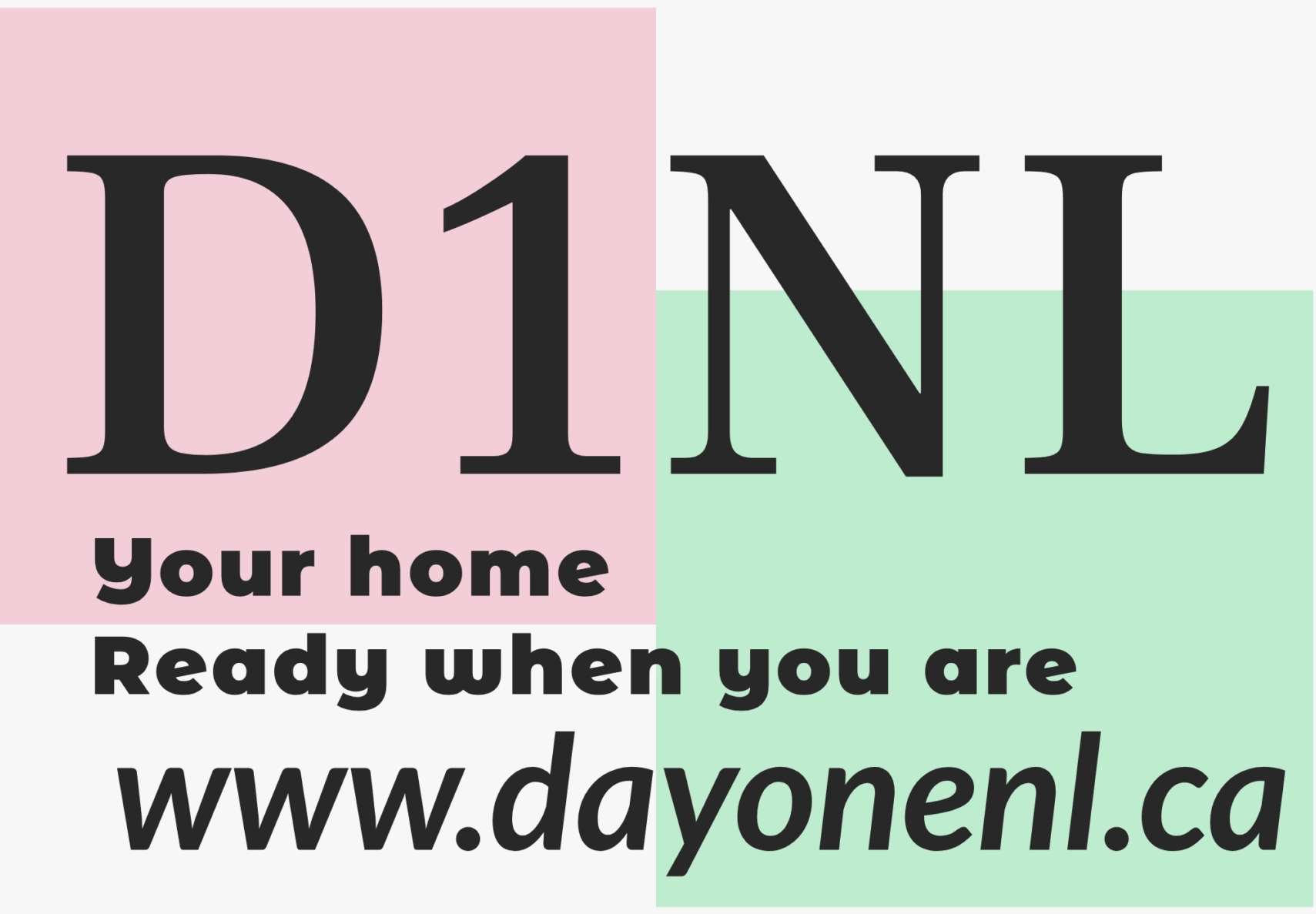Moving to a new country is both exciting and overwhelming, especially when you’re trying to figure out if your budget will stretch far enough. If you’re considering St. John’s, Newfoundland as your new home, you’re probably wondering: “What’s the real cost of living St John’s NL?”
As someone who has helped immigrants navigate this exact question, I can tell you that St. John’s offers a unique blend of affordability and quality of life that’s hard to find elsewhere in Canada. But like any major life decision, there are a lot of factors to consider.
This comprehensive guide will break down every expense you’ll encounter in St. John’s, from rent and groceries to entertainment and unexpected costs. By the end, you’ll have a crystal-clear picture of what it actually costs to live comfortably in Canada’s easternmost capital.
Understanding St. John’s Cost of Living Basics
The cost of living St John’s NL is generally 15-20% lower than major Canadian cities like Toronto or Vancouver, but it’s important to understand what drives these costs. St. John’s sits in a unique position – it’s a capital city with urban amenities, yet maintains a small-town feel with corresponding price points.
According to recent data, the average monthly expenses for a single person in St. John’s range from $2,800 to $3,500, while a family of four typically spends between $5,200 and $6,800 monthly. These figures include housing, food, transportation, and discretionary spending.
What Makes St. John’s Different
St. John’s cost structure differs from other Canadian cities in several key ways:
- Housing is significantly more affordable than major urban centers
- Food costs can be higher due to transportation and import expenses
- Utilities tend to be reasonable, especially heating costs
- Entertainment and dining options are abundant but reasonably priced

Housing Costs in St. John’s: Your Biggest Monthly Expense
Housing typically represents 30-40% of your monthly budget, making it crucial to understand the St. John’s rental market and buying options.
Rental Market Overview
The rental market in St. John’s offers diverse options for different budgets and preferences:
Apartment Rentals:
- Bachelor/Studio: $800 – $1,200 per month
- One-bedroom: $1,000 – $1,500 per month
- Two-bedroom: $1,300 – $1,900 per month
- Three-bedroom: $1,500 – $2,300 per month
House Rentals:
- Two-bedroom house: $1,400 – $2,000 per month
- Three-bedroom house: $1,800 – $2,500 per month
- Four-bedroom house: $2,200 – $3,200 per month
Popular Neighbourhood Locations for New Immigrants
When considering where to live, these neighbourhoods offer the best value for newcomers:
Downtown/Central St. John’s
- Average rent: $1,200 – $1,800 for 1-2 bedrooms
- Benefits: Walking distance to services, public transit access
- Considerations: Higher density, limited parking
Paradise
- Average rent: $1,400 – $2,200 for 2-3 bedrooms
- Benefits: Family-friendly, newer developments, good schools
- Considerations: Car necessary, 15-20 minutes from downtown
Mount Pearl
- Average rent: $1,200 – $1,900 for 2-3 bedrooms
- Benefits: Established community, good amenities, central location
- Considerations: Mixed housing stock, varying neighborhood quality
Buying vs. Renting in St. John’s
The St. John’s housing market offers attractive opportunities for homebuyers:
Average Home Prices (2025):
- Starter homes (2-3 bedrooms): $225,000 – $300,000
- Family homes (3-4 bedrooms): $300,000 – $450,000
- Executive homes (4+ bedrooms): $450,000 – $650,000+
With mortgage rates and the relatively affordable housing market, many newcomers find that buying becomes cost-effective within 3-5 years of arrival.

Transportation Expenses: Getting Around St. John’s
Transportation costs in St. John’s are generally lower than other Canadian cities, but car ownership is practically essential for most residents.
Public Transportation
Metrobus System:
- Monthly pass: $85 for adults
- Single fare: $2.50
- Student/Senior pass: $65 monthly
- Coverage: Decent within the city, limited to suburban areas
While Metrobus serves the main corridors well, service frequency and coverage make car ownership preferable for most immigrants, especially those with families.
Car Ownership Costs
Vehicle Purchase:
- Used car (reliable): $12,000 – $25,000
- New economy car: $25,000 – $35,000
- Insurance: $1,200 – $2,400 annually (varies by driving history)
Monthly Operating Costs:
- Gasoline: $180 – $300 (depending on driving habits)
- Insurance: $100 – $200
- Maintenance/Repairs: $75 – $150
- Registration/Licensing: $35 – $50
Total Monthly Transportation Budget: $390 – $700
Alternative Transportation
St. John’s is increasingly bike-friendly, with dedicated cycling infrastructure expanding. Many downtown residents successfully combine cycling, walking, and occasional car sharing or taxi use.

Food and Grocery Costs: Feeding Your Family
Food costs in St. John’s can be higher than expected, primarily due to the province’s geographical location and reliance on imported goods.
Grocery Shopping Budget
Monthly Grocery Costs:
- Single person: $350 – $500
- Couple: $600 – $850
- Family of four: $900 – $1,300
Typical Current Grocery Prices
Staples:
- Milk (4L): $6.50 – $7.00
- Bread (loaf): $2.50 – $4.00
- Eggs (dozen): $3.50 – $4.50
- Ground beef (1kg): $8.00 – $12.00
- Chicken breast (1kg): $12.00 – $16.00
- Rice (5kg bag): $8.00 – $12.00
Fresh Produce:
- Bananas (1kg): $2.50 – $3.50
- Apples (1kg): $4.00 – $6.00
- Potatoes (5kg): $4.00 – $6.00
- Tomatoes (1kg): $4.00 – $7.00
Smart Shopping Strategies
Best Value Grocery Stores:
- Walmart Supercentre – Competitive prices, wide selection
- No Frills – Budget-friendly option with good deals
- Sobeys – Higher quality, frequent sales
- Coleman’s Food Centres – Local chain, good produce selection
Money-Saving Tips:
- Shop sales and use store loyalty programs
- Buy seasonal produce from local farmers markets
- Consider bulk buying for non-perishables
- Take advantage of “Manager’s Special” discounted items
Dining Out Costs
Restaurant Prices:
- Fast food meal: $8 – $12
- Casual dining (per person): $15 – $25
- Mid-range restaurant (per person): $25 – $40
- Fine dining (per person): $45 – $80
St. John’s has an excellent restaurant scene with options for every budget and cuisine preference.

Utilities and Internet: Keeping Connected in Newfoundland and Labrador
Utility costs in St. John’s are generally reasonable, though internet and phone services can be expensive compared to other provinces.
Monthly Utility Costs
Electricity (Newfoundland Power):
- Small apartment: $80 – $120
- Average home: $120 – $180
- Large home: $180 – $250
Natural Gas (where available):
- Average home heating: $60 – $120 monthly
Water and Sewer:
- City of St. John’s: $65 – $90 monthly (varies by property size)
Internet and Phone Services
Internet Plans:
- Basic (25 Mbps): $70 – $90 monthly
- Standard (100 Mbps): $90 – $120 monthly
- High-speed (500+ Mbps): $120 – $160 monthly
Mobile Phone:
- Basic plan: $45 – $65 monthly
- Unlimited plan: $75 – $95 monthly
- Family plans: $120 – $200 monthly
Major Providers:
- Bell Aliant (comprehensive coverage)
- Rogers (good urban coverage)
- Eastlink (competitive pricing)
Total Monthly Utilities Budget
Apartment: $220 – $320 Average Home: $280 – $420 Large Home: $360 – $520

Healthcare and Insurance: Protecting Your Family
Healthcare costs in St. John’s follow the Canadian model, with universal healthcare covering most medical needs.
Public Healthcare (MCP)
Newfoundland’s Medical Care Plan (MCP) covers:
- Doctor visits and hospital care
- Emergency services
- Diagnostic tests and procedures
- Prescription drugs (with some limitations)
MCP Registration: Free for residents, but requires 3-month waiting period for new immigrants.
Private Health Insurance
Many employers offer extended health benefits, but individual coverage costs:
- Single person: $80 – $150 monthly
- Family coverage: $200 – $400 monthly
Out-of-Pocket Healthcare Costs
Common Expenses:
- Dental cleaning: $150 – $250
- Eye exam: $80 – $120
- Prescription glasses: $200 – $500
- Dental work (filling): $150 – $300
Prescription Medications
The Newfoundland Prescription Drug Program helps reduce costs, but budget $50 – $200 monthly for medications not covered by MCP.

Entertainment and Lifestyle: Enjoying St. John’s
St. John’s offers rich cultural experiences and outdoor activities that won’t break your budget.
Entertainment Costs
Movies and Shows:
- Movie ticket: $12 – $16
- Live theater: $25 – $60
- Concert tickets: $30 – $100+
Fitness and Recreation:
- Gym membership: $40 – $80 monthly
- Yoga classes: $15 – $20 per class
- Swimming pool access: $5 – $8 per visit
Outdoor Activities
St. John’s incredible natural setting offers countless free and low-cost activities:
- Hiking trails (free)
- Beach access (free)
- Provincial parks ($5 – $10 entry)
- Kayak rentals ($40 – $60 daily)
Cultural Experiences
Museums and Attractions:
- The Rooms museum: $7.50 adults
- Signal Hill: Free
- Quidi Vidi Village: Free to explore
- Geo Centre: $12 adults
Monthly Entertainment Budget: $150 – $400 per person

Comparing St. John’s to Other Canadian Cities
Understanding how St. John’s stacks up against other Canadian cities helps put costs in perspective.
Cost Comparison (Monthly, Single Person)
| Expense Category | St. John’s | Halifax | Toronto | Vancouver |
|---|---|---|---|---|
| Rent (1BR) | $1,250 | $1,600 | $2,400 | $2,200 |
| Groceries | $425 | $400 | $450 | $475 |
| Transportation | $450 | $500 | $550 | $580 |
| Utilities | $270 | $290 | $320 | $310 |
| Total | $2,395 | $2,790 | $3,720 | $3,565 |
Quality of Life Factors
While St. John’s offers lower costs, consider these quality of life factors:
Advantages:
- Short commute times
- Strong sense of community
- Rich cultural heritage
- Beautiful natural surroundings
- Lower crime rates
Considerations:
- Limited job market in some sectors
- Weather can be challenging
- Smaller international community
- Limited flight connections
Money-Saving Tips for New Immigrants
Smart spending strategies can significantly reduce your cost of living St John’s NL during your first years.
Housing Savings
Reduce Housing Costs:
- Consider house sharing initially
- Look for utilities-included rentals
- Negotiate move-in incentives
- Choose neighborhoods with good transit access
Transportation Savings
Cut Transportation Expenses:
- Buy reliable used vehicles
- Shop around for insurance quotes
- Combine trips to reduce fuel costs
- Use public transit when possible
Food Budget Optimization
Grocery Smart Shopping:
- Plan meals around sales
- Buy generic brands
- Use apps like Flipp for price comparison
- Shop at farmers markets for seasonal produce
Utility Savings
Reduce Monthly Bills:
- Bundle internet, phone, and TV services
- Use programmable thermostats
- Switch to LED lighting
- Compare provider rates annually
Building Your Financial Foundation
First-Year Financial Strategy:
- Open accounts with local credit unions for better rates
- Build Canadian credit history quickly
- Take advantage of newcomer banking packages
- Research government settlement programs
Emergency Fund Target: $3,000 – $5,000 for unexpected expenses

Seasonal Cost Considerations
St. John’s experiences distinct seasons that affect living costs:
Winter Considerations (December-March)
- Higher heating costs
- Winter clothing expenses ($300 – $800)
- Potential flight delays affecting travel costs
- Snow removal services ($200 – $400 for homeowners)
Summer Benefits (June-September)
- Lower heating costs
- Fresh local produce availability
- Increased outdoor free activities
- Tourist season employment opportunities
Frequently Asked Questions
What is the average cost of living St John’s NL for a family of four?
A family of four typically spends $5,200 – $6,800 monthly in St. John’s, including housing ($1,800), food ($1,100), transportation ($600), utilities ($350), and other expenses ($1,350 – $2,950). This varies significantly based on housing choices and lifestyle preferences.
How does St. John’s cost of living compare to Toronto?
St. John’s is approximately 35-40% less expensive than Toronto overall. Housing costs are the biggest difference, with rent being about 50% lower in St. John’s. However, some items like groceries and internet may be slightly higher due to transportation costs.
Is it expensive to heat homes in St. John’s during winter?
Heating costs in St. John’s are moderate compared to other Canadian cities. Most homes use electricity or natural gas, with average winter heating costs ranging from $120-$250 monthly. The city’s maritime climate means less extreme cold than prairie cities.
What salary do I need to live comfortably in St. John’s?
A single person needs approximately $45,000 – $55,000 annually to live comfortably, while a family of four should target $75,000 – $95,000 combined household income. These figures allow for saving and discretionary spending beyond basic expenses.
Are there hidden costs new immigrants should know about?
Common unexpected expenses include winter clothing ($500-$800), car maintenance due to salt/weather ($400-$600 annually), and higher shipping costs for online purchases. Budget an extra 10-15% for these miscellaneous expenses during your first year.
How much should I estimate for groceries in St. John’s?
Single adults typically spend $350-$500 monthly on groceries, while families of four budget $900-$1,300. Costs are higher than some Canadian cities due to transportation, but local sales and seasonal shopping can reduce expenses significantly.
Your Next Steps: Making St. John’s Your Home
Understanding the cost of living St John’s NL is just the first step in your immigration journey. While costs are generally lower than major Canadian cities, success depends on careful planning and realistic budgeting.
St. John’s offers an exceptional quality of life with its vibrant culture, stunning natural beauty, and welcoming community. The key is arriving with a clear financial plan and realistic expectations about both costs and opportunities.
Ready to take the next step? Visit DayOneNL.ca for personalized guidance on making your transition to Newfoundland smooth and successful. Our comprehensive settlement services help you navigate everything from housing searches to job market insights, ensuring you make informed decisions every step of the way.
Remember: These figures represent current market conditions and can vary based on personal choices and economic changes. Always research current prices and consider visiting St. John’s before making final decisions about your move. You won’t regret your decision to move to Newfoundland and Labrador!

